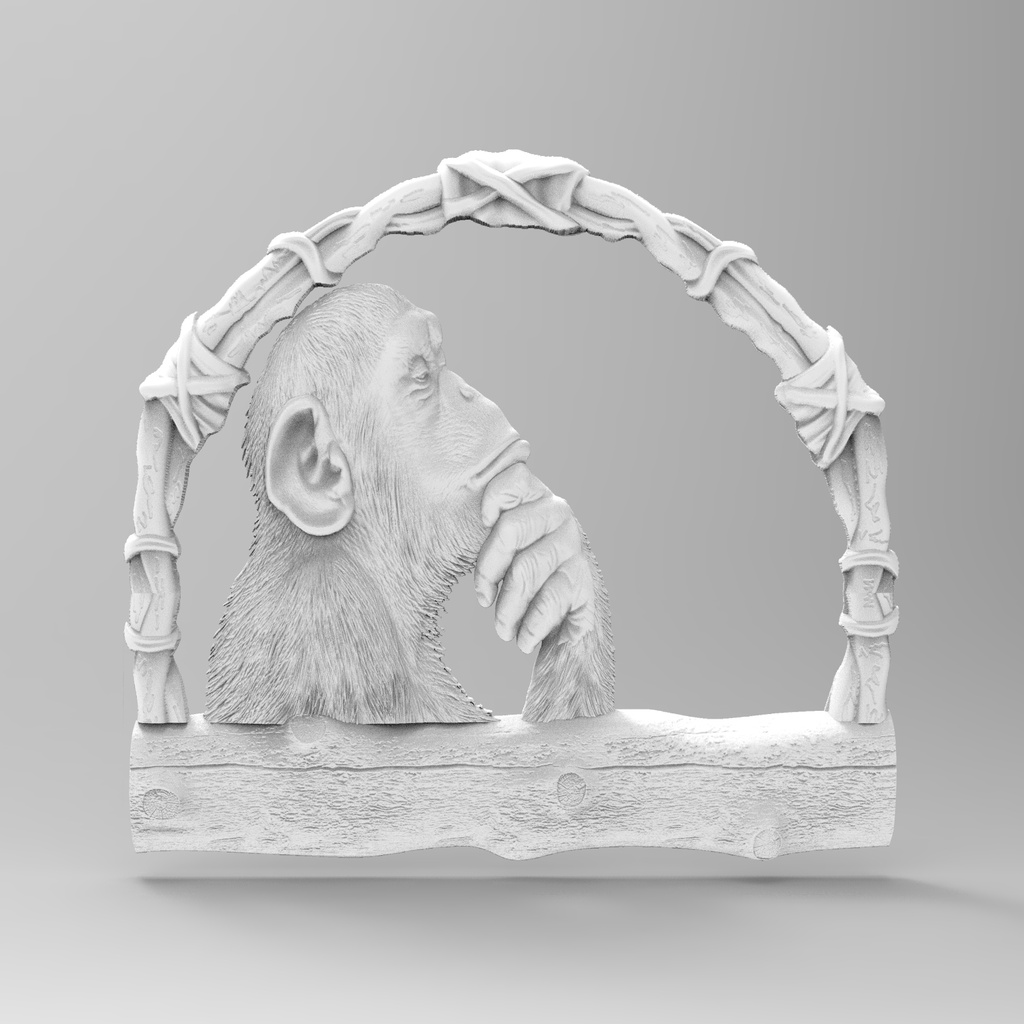
Monkey Thinking, for CNC
thingiverse
Monkey From Wikipedia, the free encyclopedia Jump to navigationJump to search For other uses, see Monkey (disambiguation). For the monophyletic clade, see Simian. Monkeys Temporal range: Late Eocene–Present[1] PreЄЄOSDCPTJKPgN Wild toque macaque (Macaca sinica) in Yala National Park, Sri Lanka Scientific classificationEdit this classification Kingdom: Animalia Phylum: Chordata Class: Mammalia Order: Primates Suborder: Haplorhini Infraorder: Simiiformes [a] Groups included Platyrrhini Cercopithecidae †Parapithecidae Cladistically included but traditionally excluded taxa Hominoidea Monkey is a common name that refers to groups or species of mammals, including the simians of infraorder Simiiformes. The term is applied descriptively to families of New World monkeys and Old World monkeys. Many monkey species are tree-dwelling (arboreal), but there are also species that live primarily on the ground, such as baboons. Most species are active during the day (diurnal) and are generally considered intelligent, especially the Old World monkeys of Catarrhini. Simians and tarsiers emerged within haplorrhines about 60 million years ago. New World monkeys and catarrhine monkeys emerged within the simians about 35 million years ago. Old World monkeys and Hominoidea emerged within the catarrhine monkeys about 25 million years ago. Extinct basal simians such as Aegyptopithecus or Parapithecus, eosimiidea, and sometimes even the Catarrhini group are also considered monkeys by primatologists. Lemurs, lorises, and galagos are not monkeys; they are strepsirrhine primates. Like monkeys, tarsiers are haplorhine primates but are not monkeys themselves. Apes emerged within "monkeys" as a sister to the Cercopithecidae in the Catarrhini, so cladistically they are monkeys as well. There has been some resistance to directly designate apes (and thus humans) as monkeys despite scientific evidence, so "Old World monkey" may be taken to mean the Cercopithecoidea or the Catarrhini. Monkeys, including apes, can be distinguished from other primates by having only two pectoral nipples, a pendulous penis, and a lack of sensory whiskers.
With this file you will be able to print Monkey Thinking, for CNC with your 3D printer. Click on the button and save the file on your computer to work, edit or customize your design. You can also find more 3D designs for printers on Monkey Thinking, for CNC.
